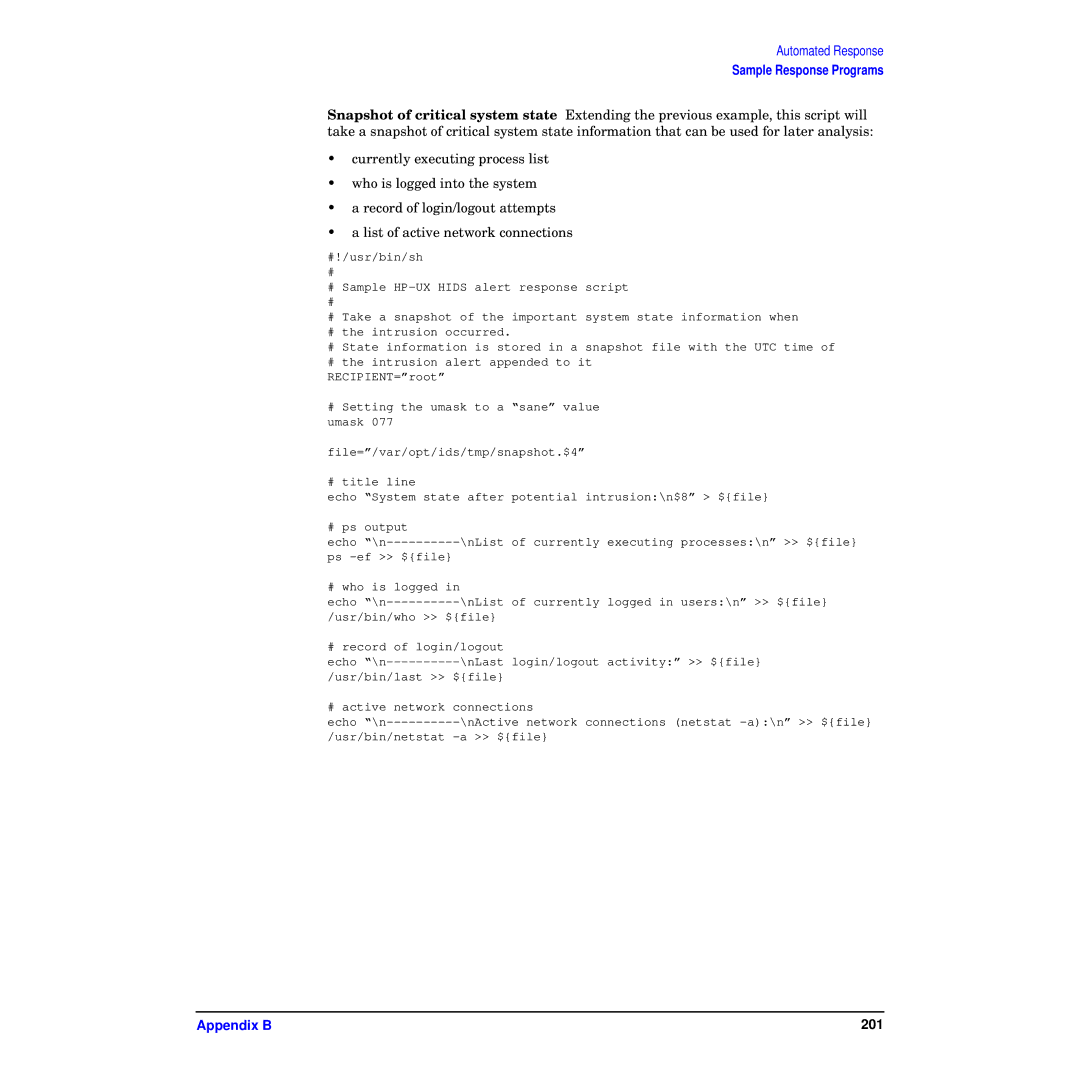Automated Response
Sample Response Programs
Snapshot of critical system state Extending the previous example, this script will take a snapshot of critical system state information that can be used for later analysis:
•currently executing process list
•who is logged into the system
•a record of login/logout attempts
•a list of active network connections
#!/usr/bin/sh
#
#Sample
#Take a snapshot of the important system state information when
#the intrusion occurred.
#State information is stored in a snapshot file with the UTC time of
#the intrusion alert appended to it
RECIPIENT=”root”
#Setting the umask to a “sane” value umask 077
file=”/var/opt/ids/tmp/snapshot.$4”
# title line
echo “System state after potential intrusion:\n$8” > ${file}
# ps output
echo
ps
# who is logged in
echo
/usr/bin/who >> ${file}
# record of login/logout
echo
/usr/bin/last >> ${file}
# active network connections
echo
/usr/bin/netstat
Appendix B | 201 |
